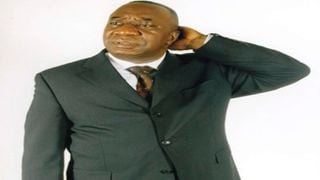
Tabu Ley.
| FileAfrica
Premium
How Congolese rumba became a national identity
Congolese rumba, a genre of African music that often combines afrofusion beats, was a household name for decades.
Now, Unesco has designated rumba on the list of the intangible cultural heritage of humanity.
On Tuesday, the UN educational and cultural agency announced on Tuesday that it was categorising the genre alongside other legendary forms of music such as reggae.
In Kinshasa, the news was first revealed by government spokesman Patrick Muyaya, who said the decision will be “celebrated on both banks of the Congo River”.
Those banks are occupied by today’s Democratic Republic of Congo, and the Republic of Congo, or Congo-Brazzaville. Both countries are seen as the birthplace of Congolese rumba.
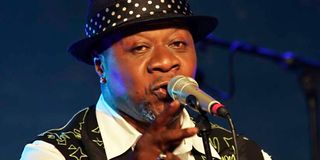
Papa Wemba.
The application had been submitted earlier jointly by the two countries, which argued that the genre is “a richness that comes from Congo and is exported all over the world”.
“It is one of the elements of our pride," Muyaya had declared in an introductory statement in the application.
But just how does it sit in the streets of the Congos? Beyond the joy that is shared in Kinshasa and Brazzaville around the consecration of rumba, Jean-Goubald Kalala, a Congolese singer, told the Nation rumba’s best pieces of art yet remain unproduced.
“Our rumba, from the point of view of music, is not very scientific. We will have to think about this,” he said on Wednesday in Kinshasa.
Didier Mumengi, a senator, former minister and author of a book on rumba, believes that the great challenge now is to “improve on the notation of rumba, to proceed with the graphic notation of this music,” he explained, referring to making the music more predictable and easily fused with other genres.
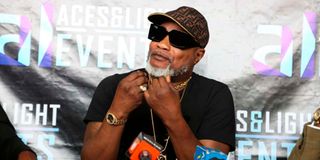
Koffi Olomide.
DRC minister for culture Catherine Katungu said the inclusion of Congolese rumba on the list of the intangible cultural heritage of humanity “is the consecration of our common identity, of African identity, of an anthropological know-how”.
The music is said to have originated more than two centuries ago, mostly from among the able-bodied black people who had been herded as slaves. Katungu paid tribute to those people, now seen as the forefathers of the now celebrated music, as "the slaves who, in their deportation, did not lose their identity”.
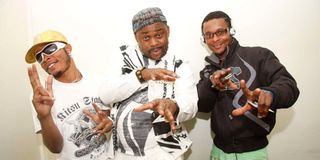
Wenge Musica.
In Kinshasa and Brazzaville, experts trace the origins of rumba to the ancient Kongo kingdom, where a dance called nkumba, which means "navel", was practised because it made men and women dance navel to navel.
Precursors of this musical style
With the slave trade, the Africans took their culture and music to the Americas. They made their own instruments, which gave rise to jazz in the north and rumba in the south. This music was brought back to Africa by traders, with record discs, guitars and other musical instruments.
In the DRC, Congo-Belge (Belgian-Congo) at the time, the song “Marie-Louise” by Wendo Kolosoy is considered the seminal work of rumba as we know it today. In Brazzaville, artistes such as Paulo Kamba and Franklin Boukaka are considered the precursors of this musical style.
The music spread quickly, thanks to the golden age of radio.
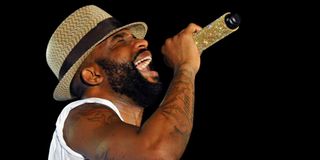
Fally Ipupa.
The modern era of rumba arrived in the 1950s with the African Jazz Orchestra of Joseph Kabasele, also known as Grand Kallé. His songs “Indépendante Cha Cha” and “Table Ronde” accompanied the independence of African countries, until they became in several French-speaking African countries "the anthem of independences".
After the independence of both countries (Congo-Brazzaville was colonised by the French), rumba integrated other musical trends such as jazz. This was the birth of groups such as TPOK Jazz, led by the legendary Franco Lwambo, as well as Afrisa, led by Tabu Ley Rochereau. With Tabu Ley, rumba dealt with sentimental themes, linked to love, while Franco distinguished himself in social satire, describing the society in which he lived. Little wonder he became among the earliest artistes to sing about HIV/Aids when most folks still saw it as a curse.
In the wake of these artistic creations, orchestras such as Zaiko Langa Langa, then Isifi Lokole, Viva la Musica, with singers such as Papa Wemba, Nyoka Longo and Koffi Olomide were born. These three artistes, among many others, distinguished themselves by the elegance in dress mixed in music with Papa Wemba, the more danceable rhythms with Nyoka Longo and the even more romantic rumba with Koffi Olomide.
In the 1980s, the golden years of Mobutu Sese Seko, rumba flourished in a different way. In schools, in universities, at official events, song and dance for the marshal and the national flag became the norm, encouraged by President Mobutu. "Happy are the people who dance and sing", said Joseph-Désiré Mobutu in one of his public rallies.
Coincided with the decline
The mid-1980s saw the emergence of groups like Wenge Musica. Today, rumba is even more modernised with popular stars such as Fally Ipupa and Ferré Gola. They have tried to expand its reach too, collaborating with artistes as far away as on the eastern African coast and West Africa.
Yet rumba’s history has not been linear. The end of the 1990s coincided with the decline of Marshal Mobutu and the arrival of the Alliance Des Forces Démocratiques Pour la Libération, the rebel group led by Laurent-Désiré Kabila. This rebellion gave rise to such hope for the renewal of the Congo that the enthusiasm of some and others was crystallised in song. This was the era of "patriotic" songs.

Ferré Gola.
Singers and musicians became the bearers of a flame of hope for a new Congo. This widespread enthusiasm gave rise to songs such as "To Kufa pona Ekolo" ("Let's sacrifice ourselves for the Congo") and "Débat National". In 1998, artistes called for general mobilisation through the 'Méga Concert' and 'Giga Concert'. From that time on, there was a sort of merger between politics and music. This series of patriotic songs ended with the song "Adieu", launched to pay tribute to President Laurent-Désiré Kabila, who was assassinated in January 2001.
The years following the death of Laurent-Désiré Kabila were characterised by a great lack of interest among young people in all things political. Politicians were unable to meet the expectations of the population. The Congolese then found consolation in the singers and musicians who managed to put a smile on their faces. Between the musicians and their fans, it is a honeymoon.
It was around 2005 and politics was gaining public interest again with a referendum on the constitution as well as the election campaign for the 2006 elections. Politicians courted artistes again.
Yet the DRC had struggled with an image of being war-torn, rapes and atrocities in the east. It became ironic that the politicians vilified by the Congo diaspora were the very ones marketing a popular music genre abroad. At home, musicians were close to politicians. Abroad, the politicians helped their star rise, penetrating other African countries and Europe.
Were the musicians used to celebrate those with blood on their hands? The diaspora thinks so, going by the various critical commentaries published in Western media at the time. In some countries, producing Congolese music was even restricted. Some musicians, though, ran into trouble, getting deported back to Congo. The diaspora loved that.
But Congo’s rumba has a story that won’t end today, as long as its popularity remains intact.





